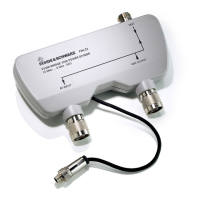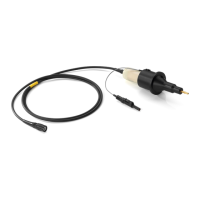Waveform analysisMXO 4 Series
181User Manual 1335.5337.02 ─ 07
3. Select a value for "Mode" > "Horizontal" to define "Absolute" or "Relative" x-axis
values. Relative values cause the zoom area to adapt to the input values dynami-
cally.
4. For "X", define the "Relative start" and "Relative stop" values. They define the
lower and upper borders of the zoom area on the x-axis.
5. Select the "Mode" > "Vertical" to define "Absolute" or "Relative" y-axis values.
6. For "Y", define the "Relative start" and "Relative stop" values. They define the
lower and upper borders of the zoom area on the y-axis.
When you close the dialog box, the specified area is magnified in a new zoom dia-
gram. The original diagram is displayed with the zoom area indicated as a rectan-
gle.
To define the zoom area numerically using position and range values
1. Open "Menu" > "Horizontal".
2. In the "Zoom" tab, select "Position range".
3. Select "Mode" > "Horizontal" to define "Absolute" or "Relative" x-axis values. Rela-
tive values cause the zoom area to adapt to the input values dynamically.
4. Under "X" > "Position", define the x-value of the center point of the zoom area.
5. Under "X" > "Range", define the width of the zoom area.
6. Select the "Mode" > "Vertical" to define "Absolute" or "Relative" y-axis values.
7. Under "Y" >"Position", define the y-value of the center point of the zoom area.
8. Under "Y" > "Range", define the height of the zoom area.
When you close the dialog box, the specified area is magnified in a new zoom dia-
gram. The original diagram is displayed with the zoom area indicated as a rectan-
gle.
8.2 Mathematics
Math waveforms are calculated waveforms. You can define up to 5 math waveforms
and display them on the screen, and use it as source for further analysis.
It is calculated out of one or two analog channels, or another math waveform using
several predefined operations. You can define up to 5 equations. The complete config-
uration is called equation set and can be saved for later use.
You can analyze math waveforms in the same way as channel waveforms: use zoom,
perform automatic and cursor measurements, and save as reference waveform.
You can store a math waveform as a reference waveform and restore it later. See
Chapter 8.4, "Reference waveforms", on page 198.
Mathematics

